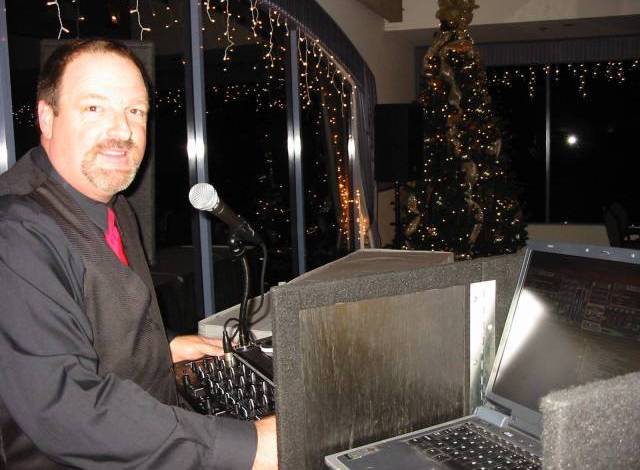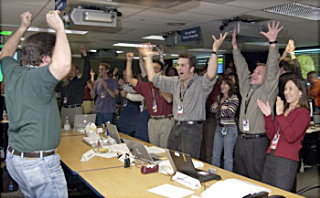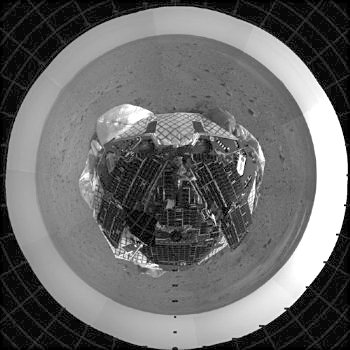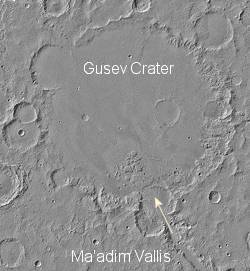




3853 Atlantic Ave.

|
Click here |
Real Martian Chronicle: Pix From Mars to You via LBReport.com + Details
(January 4, 2003) -- LBReport.com posts photos transmitted earlier this morning (CA time) from the surface of the planet Mars by NASA's Exploration Rover Spirit...which landed on part of the red planet thought to have once contained water. Spirit is a full scale robotic geologist and will now analyze the area for (among other things) signs of current or past life. Spirit landed safely after bouncing and rolling (as planned, details below) on the martian surface, cushioned inside a giant airbag.
NASA's web site says Spirit's landing site in the Gusev Crater was chosen based on evidence from Mars orbiters that this crater may have held a lake long ago. A long, deep valley, apparently carved by ancient water flows leads into Gusev. The crater, roughly the size of Connecticut, was created by an asteroid or comet impact early in Mars' history. Spirit will spend the next three months exploring for clues in rocks and soil about whether the past environment at this part of Mars was ever watery and suitable to sustain life.
Spirit traveled 302.6 million miles to reach Mars following its launch from Cape Canaveral on June 10, 2003. Its twin, Mars Exploration Rover Opportunity, was launched July 7, 2003 and is on course to land on the opposite side of Mars on Jan. 24 at 9:05 p.m. PST. NASA says its flight team expects to spend more than a week directing Spirit through unfolding, standing up and other preparations before the rover rolls off of its lander platform to get its wheels onto the ground. During this period, Spirit's cameras and a mineral-identifying infrared instrument will examine surrounding terrain to help engineers and scientists decide which direction to send the rover.
Inside the crater, researchers expect to find sediments (which may be nearly 3,000 feet thick) that researchers hope were deposited by water and may have been covered by dust and sand blown into the crater over the last two billion years. NASA says that if there was once water in Gusev, its signature should still be there...and the agency says water could signal an environment The rover will be able to grind away the surface cover on rocks and analyze minerals inside. It will be able to view its surroundings with unprecedented detail and precision. It can scoot over to the most interesting rocks it finds in order to examine them more closely. "One clear sign of past water will be in the rocks," NASA says. It notes that "if indeed Gusev once held a giant lake (more than 10 times the size of the famous Crater Lake here in the US) certain key minerals are likely to be found in its rocks. Spirit might find evaporites--minerals formed as water dries up. Salt or gypsum are familiar ones here on Earth. Salt's component parts--sodium and chloride--are separated, dissolved in sea water, but as the water dries up, the sodium and chloride join together to form the mineral 'halite.'" Spirit entered martian space traveling roughly 12,000 miles per hour. "During the first four minutes into descent, we use friction with the atmosphere to slow us down considerably," says NASA's Dr. Firouz Naderi, manager of JPL's Mars Program Office. He noted that at the end of this phase, "we're still traveling at 1,000 miles per hour, but now we have only 100 seconds left and are at the altitude that a commercial airliner typically flies. Things need to happen in a hurry. A parachute opens to slow the spacecraft down to 'only' 200 miles per hour, but now we have only 6 seconds left and are only 100 yards off the ground." Retro rockets fired bringing the spacecraft down to zero velocity...but still at the height of a four-story building above the surface. "The spacecraft freefalls the rest of the way cocooned in airbags to cushion the blow," Dr. Naderi said. It hit the ground at between 30-50 miles an hour (depending on whether it was windy). It then bounced in the air bag as high as a four-story building and continued to bounce afterward, perhaps 30 times all together. JPL, a division of CalTech, manages the Mars Exploration Rover project for NASA's Office of Space Science, Washington. Contact us: mail@LBReport.com |



